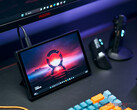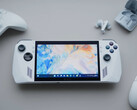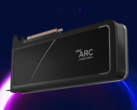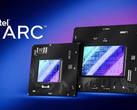CheckMag | The MSI Claw is the latest embarrassing example of why Intel still isn’t ready to compete in the gaming industry

There was some excitement around the MSI Claw. A new handheld to compete with the likes of the ROG Ally, Steam Deck and Lenovo Legion Go. A unit that didn’t default to an AMD APU and instead opted for an Intel Core Ultra 7-155H at the top end or a Core Ultra 5-135H at the cheaper end.
But there’s a reason OEM’s use AMD APU’s in their handhelds and the MSI Claw just proved it. There are lots of initial reviews popping up on YouTube and none of them are particularly favourable. The Phawx is arguably one of the best handheld reviewers on YouTube and his latest video points out a significant number of major issues with the MSI Claw.
It is worth watching the entire video (embedded below), but the main takeaway is that MSI Claw produces significantly fewer frames than AMD’s 8840U while consuming 5 watts more power. Looking at 1% lows, the MSI Claw produces approximately 37% fewer frames per second at the maximum 25 watts, and 47% fewer frames per second when running at the same TDP, and it only gets worse from there. The only outlier to this trend was Returnal where the MSI claw managed to outperform on the average frame rate (by a couple of frames), but still loses to the 8840U in 1% lows with the same additional 5 watt power draw.
The Phawx also mentions that the MSI Claw idles at 7 watts, so if Intel could reduce the idle power draw, this could at least put it on par with the 8840U. However, that still won’t account for the fact that this device throws out significantly fewer frames for the same or higher power budget. At 10 watts where the Steam Deck really shines, the MSI Claw produces single digits in every game tested. And let's not forget that the Steam Deck has a maximum TDP of only 15 watts.
Now, there is every chance that Intel will make driver improvements that will increase performance. By how much, is anyone's guess. But for those familiar with GPD products like the Win 2 or 3, getting games to even function on these devices with Intel graphics drivers was like playing lucky dip. Users would have to switch backwards and forwards between driver versions just to play a game. Even then, you would be lucky if driver features supported by other vendors would be added at all.
There is hope that this will improve. Intel is committed to its driver program and having more competition in the GPU space is never a bad thing. Intels desktop GPU's are better now than when they first launched, but you can't buy a product based on its potential, and even the top tier A770 desktop GPU still falls below mid range performance.
Even if you can live with how ugly aggressive the MSI Claw looks, the performance as it stands right now is abysmal. Especially at the asking price. You would be way better off putting your money into an ROG Ally (Available on Amazon*) or Steam Deck (at almost half the price) or even a Legion Go. You’ll be way happier in the long run and spend far less time cocking around trying to get games to run with Intel drivers.


 Deutsch
Deutsch English
English Español
Español Français
Français Italiano
Italiano Nederlands
Nederlands Polski
Polski Português
Português Русский
Русский Türkçe
Türkçe Svenska
Svenska Chinese
Chinese Magyar
Magyar






